In the ever-evolving automotive landscape, the demand for luxury SUVs continues to rise, with buyers seeking both performance and sophistication in their vehicles. Among the frontrunners in this segment are the Alfa Romeo Stelvio and the BMW X3, two models that embody distinct philosophies in design, engineering, and technology. In this comparison, we will delve into their technical specifications, innovations, and unique offerings that make each of these vehicles a remarkable choice.
Alfa Romeo Stelvio vs BMW X3 – Which car suits you better?
Two cars, one duel: Alfa Romeo Stelvio meets BMW X3.
Which one wins in performance, efficiency and value for money? Find out now!
Engine Options and Performance
The Alfa Romeo Stelvio impresses with its range of powerful engine options, including petrol and diesel variants. The Stelvio offers a choice of two petrol engines with outputs of 210 HP and a robust 280 HP, along with a more efficient diesel variant producing 210 HP. Acceleration is thrilling, with the top petrol engine achieving 0-100 km/h in just 5.7 seconds. The Stelvio's all-wheel-drive capability ensures excellent grip, especially in challenging conditions, while its turbocharged engines deliver a symphony of power and performance.
On the other hand, the BMW X3 showcases a wider array of engines, including MHEVs, plug-in hybrids, and traditional petrol and diesel options. With outputs ranging from a modest 190 HP to a formidable 360 HP, the X3 offers greater versatility. Its performance is equally impressive, with the more powerful X3 variants achieving 0-100 km/h in as little as 3.8 seconds. This diverse lineup caters to various driving preferences, whether you seek spirited performance or fuel efficiency.
Fuel Efficiency and Technology
When it comes to fuel efficiency, the Alfa Romeo Stelvio offers manageable figures, with consumption rates ranging from 6 to 11.8 L/100 km, depending on the engine. While its performance-oriented engines may not lead the segment in efficiency, they deliver exhilarating driving dynamics. The Stelvio's commitment to advanced engineering can be seen through its lightweight build, enhancing both acceleration and fuel economy.
BMW’s X3, however, comes equipped with more advanced hybrid technology, offering an impressive electric range of up to 90 km in certain plug-in models. Fuel consumption for the X3 ranges from as low as 2.1 L/100 km for hybrid variants to about 10.8 L/100 km for higher-powered models. This spectrum not only provides options for those mindful of fuel costs but also showcases BMW's dedication to sustainable innovations in the automotive sector.
Comfort, Space, and Practicality
Both the Stelvio and X3 boast spacious interiors designed to maximize comfort for passengers. The Stelvio has a trunk capacity of 525 L, accommodating all your storage needs, while its sleek Italian styling provides an engaging driving environment. Its cabin combines luxurious materials with a driver-focused layout that reflects Alfa Romeo's heritage.
The BMW X3 slightly edges out the Stelvio in practical aspects, offering trunk capacities that can reach up to 570 L in specific variants. The X3 also incorporates cutting-edge technology such as iDrive for seamless infotainment and connectivity, ensuring that the modern driver stays connected and entertained.
Safety Features and Innovations
Safety is a paramount concern for both manufacturers. The Stelvio comes equipped with adaptive cruise control, autonomous emergency braking, and advanced driver-assist technologies that provide peace of mind on the road. Its robust construction also earns commendations in crash tests, making it a trustworthy companion.
BWM elevates the safety game in the X3 with its extensive suite of driver-assistance features, including lane-keeping assist, blind-spot detection, and a sophisticated collision warning system. These innovations not only enhance driver awareness but also contribute to minimizing the risk of accidents, making the X3 a well-rounded choice for safety-conscious buyers.
Conclusion
In the battle between the Alfa Romeo Stelvio and BMW X3, both SUVs shine in their unique way, catering to different preferences and lifestyles. The Stelvio captivates with its Italian flair and engaging driving dynamics, while the X3 impresses with its versatility, advanced hybrid options, and cutting-edge technology. Ultimately, your decision may hinge on whether you lean more towards spirited performance and style or practical efficiency and safety features. Regardless of your choice, both models exemplify what the luxury SUV segment has to offer today.
Here’s where it gets real: The technical differences in detail
Costs and Efficiency:
Price and efficiency are often the first things buyers look at. Here it becomes clear which model has the long-term edge – whether at the pump, the plug, or in purchase price.
BMW X3 has a minimal advantage in terms of price – it starts at 51300 £, while the Alfa Romeo Stelvio costs 51900 £. That’s a price difference of around 685 £.
Fuel consumption also shows a difference: BMW X3 manages with 2.80 L and is therefore decisively more efficient than the Alfa Romeo Stelvio with 6 L. The difference is about 3.20 L per 100 km.
Engine and Performance:
Under the bonnet, it becomes clear which model is tuned for sportiness and which one takes the lead when you hit the accelerator.
When it comes to engine power, the BMW X3 has a significantly edge – offering 398 HP compared to 210 HP. That’s roughly 188 HP more horsepower.
In acceleration from 0 to 100 km/h, the BMW X3 is decisively quicker – completing the sprint in 4.60 s, while the Alfa Romeo Stelvio takes 6.60 s. That’s about 2 s faster.
In terms of top speed, the BMW X3 performs to a small extent better – reaching 250 km/h, while the Alfa Romeo Stelvio tops out at 215 km/h. The difference is around 35 km/h.
There’s also a difference in torque: BMW X3 pulls noticeable stronger with 670 Nm compared to 470 Nm. That’s about 200 Nm difference.
Space and Everyday Use:
Cabin size, boot volume and payload all play a role in everyday practicality. Here, comfort and flexibility make the difference.
Both vehicles offer seating for 5 people.
In curb weight, Alfa Romeo Stelvio is slight lighter – 1820 kg compared to 1930 kg. The difference is around 110 kg.
In terms of boot space, the BMW X3 offers hardly perceptible more room – 570 L compared to 525 L. That’s a difference of about 45 L.
In maximum load capacity, the BMW X3 performs barely noticeable better – up to 1700 L, which is about 100 L more than the Alfa Romeo Stelvio.
When it comes to payload, Alfa Romeo Stelvio slight takes the win – 590 kg compared to 570 kg. That’s a difference of about 20 kg.
Who comes out on top?
Overall, the BMW X3 shows itself to be leaves the rival little chance and secures the title of DriveDuel Champion.
It convinces with the more balanced overall package and proves to be the more versatile choice for everyday use.
 @ BMW Group Press
@ BMW Group Press
BMW X3
Alfa Romeo Stelvio
The Alfa Romeo Stelvio combines Italian artistry with sporty performance, making it a standout in the SUV market. Its dynamic design captures the essence of elegance and agility, while the interior offers a driver-focused experience that enhances every journey. With a perfect blend of luxury and power, the Stelvio is ideal for those seeking both style and substance on the road.
details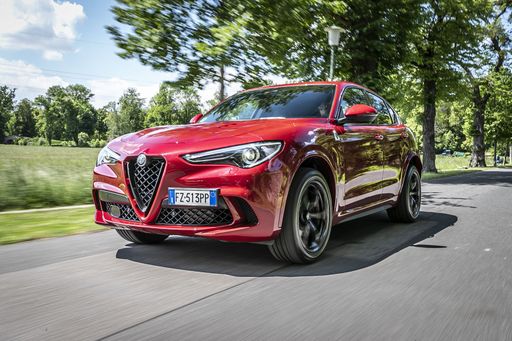 @ Alfa Romeo / Stellantis Media
@ Alfa Romeo / Stellantis Media
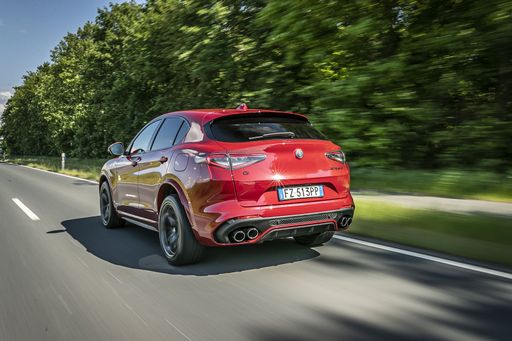 @ Alfa Romeo / Stellantis Media
@ Alfa Romeo / Stellantis Media
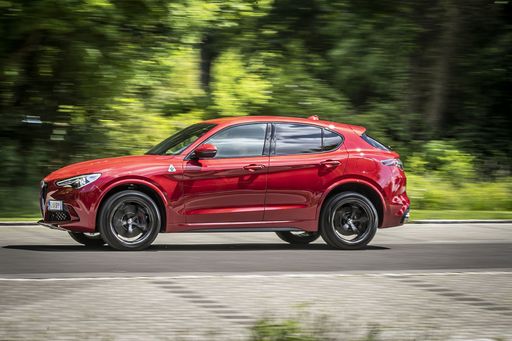 @ Alfa Romeo / Stellantis Media
@ Alfa Romeo / Stellantis Media
 @ Alfa Romeo / Stellantis Media
@ Alfa Romeo / Stellantis Media
 @ Alfa Romeo / Stellantis Media
@ Alfa Romeo / Stellantis Media
BMW X3
The BMW X3 mixes Bavarian poise with everyday practicality, delivering a composed ride and a cabin that feels both premium and lived-in. It’s the sort of SUV that lets you enjoy sporty handling without sacrificing family-friendly space, so you get fun and sense in one neat package.
details @ BMW Group Press
@ BMW Group Press
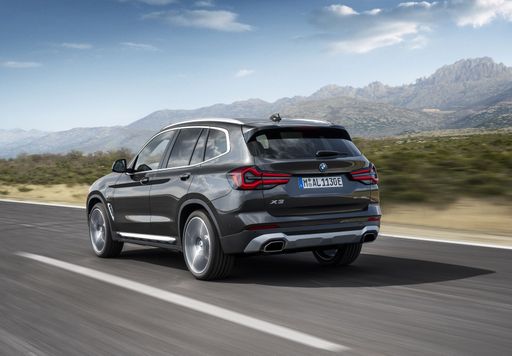 @ BMW Group Press
@ BMW Group Press
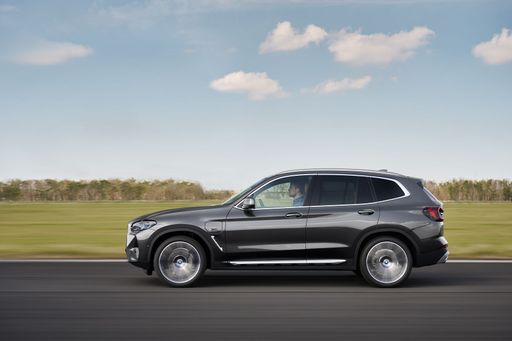 @ BMW Group Press
@ BMW Group Press
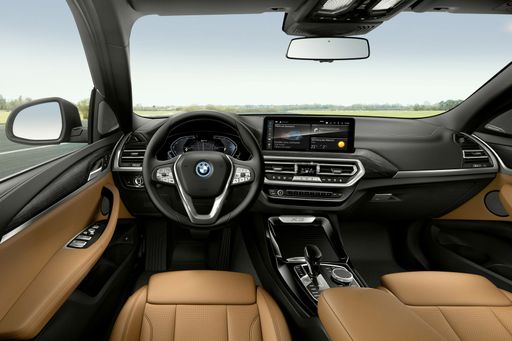 @ BMW Group Press
@ BMW Group Press
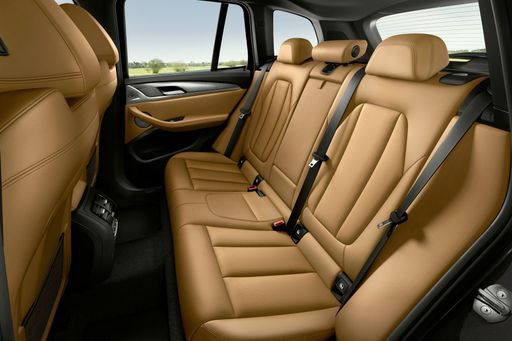 @ BMW Group Press
@ BMW Group Press
 @ Alfa Romeo / Stellantis Media
@ Alfa Romeo / Stellantis Media
|
 @ BMW Group Press
@ BMW Group Press
|
|
|
|
Costs and Consumption |
|
|---|---|
|
Price
51900 - 60900 £
|
Price
51300 - 72400 £
|
|
Consumption L/100km
6 L
|
Consumption L/100km
2.8 - 7.7 L
|
|
Consumption kWh/100km
-
|
Consumption kWh/100km
-
|
|
Electric Range
-
|
Electric Range
88 km
|
|
Battery Capacity
-
|
Battery Capacity
19.70 kWh
|
|
co2
157 g/km
|
co2
64 - 175 g/km
|
|
Fuel tank capacity
58 L
|
Fuel tank capacity
50 - 65 L
|
Dimensions and Body |
|
|---|---|
|
Body Type
SUV
|
Body Type
SUV
|
|
Seats
5
|
Seats
5
|
|
Doors
5
|
Doors
5
|
|
Curb weight
1820 kg
|
Curb weight
1930 - 2140 kg
|
|
Trunk capacity
525 L
|
Trunk capacity
460 - 570 L
|
|
Length
4687 mm
|
Length
4755 mm
|
|
Width
1903 mm
|
Width
1920 mm
|
|
Height
1693 mm
|
Height
1660 mm
|
|
Max trunk capacity
1600 L
|
Max trunk capacity
1600 - 1700 L
|
|
Payload
590 kg
|
Payload
570 kg
|
Engine and Performance |
|
|---|---|
|
Engine Type
Diesel
|
Engine Type
Petrol MHEV, Diesel MHEV, Plugin Hybrid
|
|
Transmission
Automatic
|
Transmission
Automatic
|
|
Transmission Detail
Automatic Gearbox
|
Transmission Detail
Automatic Gearbox
|
|
Drive Type
All-Wheel Drive
|
Drive Type
All-Wheel Drive
|
|
Power HP
210 HP
|
Power HP
197 - 398 HP
|
|
Acceleration 0-100km/h
6.60 s
|
Acceleration 0-100km/h
4.6 - 7.8 s
|
|
Max Speed
215 km/h
|
Max Speed
215 - 250 km/h
|
|
Torque
470 Nm
|
Torque
330 - 670 Nm
|
|
Number of Cylinders
4
|
Number of Cylinders
4 - 6
|
|
Power kW
154 kW
|
Power kW
145 - 293 kW
|
|
Engine capacity
2143 cm3
|
Engine capacity
1995 - 2998 cm3
|
General |
|
|---|---|
|
Model Year
2024 - 2025
|
Model Year
2024 - 2025
|
|
CO2 Efficiency Class
F
|
CO2 Efficiency Class
F, E, B
|
|
Brand
Alfa Romeo
|
Brand
BMW
|
What drivetrain options does the Alfa Romeo Stelvio have?
The Alfa Romeo Stelvio is available as All-Wheel Drive.
The prices and data displayed are estimates based on German list prices and may vary by country. This information is not legally binding.
